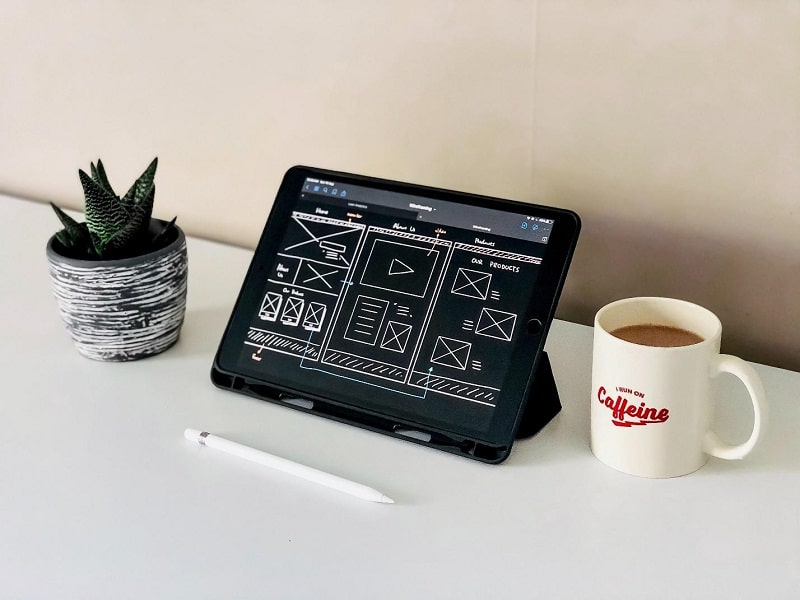
With the expansion of device options people use to consume information, new web design practices such as adaptive and responsive design should be used.
The number of devices and, consequently, ways to access information increases every year. Giant corporate computers, laptops, tablets, smartphones, smartwatches, etc., expand our opportunities at home and in our personal lives. However, web and app designers may not be as happy about this diversity as end-users. The problem is that new products should be adapted to different screen sizes to make them user-friendly.
This is when adaptive and responsive design practices come into play. Their main goal is to ensure that information is viewable and accessible from any device. Differentiating between these design practices is tricky, and inexperienced UX designers may not see the difference. However, on further scrutiny, it becomes clear that adaptive and responsive design is not the same thing.
Although terms such as adaptive, responsive, and flexible are sometimes used interchangeably, there's a significant difference between them in web development. Let's dig deeper into their features to understand when each of the design practices should be used.
Defining and Explaining Adaptive Design
Let's begin by explaining the technical aspect of adaptive design. If you use this option, you need to create different designs (versions) for each device. A design developed for a smartphone will differ from the desktop design. In other words, you prepare unique designs for each screen size and use the code to ensure that the website automatically switches to the needed version, depending on what device a person uses.
How a website or an app knows when to switch a design? It all depends on the maximum and minimum dimensions of a screen you initially set. The website will not change until the maximum allowed width for a mobile design is reached. When the breakpoint is achieved, the design will switch automatically. Thus, your users do not have to worry about adjusting the screen or zooming information.
The benefits of the adaptive design are as follows:
- Caters to each user's needs
- Efficient page loading
- Allows tailoring user experience based on intent and setting
- No need to re-code the whole website
At the same time, adaptive design is associated with some challenges, as it increases the workload for designers. You will probably need a large team of developers and a substantial budget to handle the task, so this design practice is not for everyone.
The fact that adaptive website versions need to be updated and maintained individually contributes to the challenge. Besides, adaptive design may be a hard nut to crack for novice developers. If you lack skills and knowledge, it's always better to use user experience services.
Responsive Design Practices
The term originates from the concept of “responsive architecture.” The latter is understood as the ability of physical spaces to respond to the presence of people using them. In other words, responsive architecture helps construct buildings that change depending on inhabitants' needs. In a way, this is similar to how responsive websites work, as they too change depending on how one decides to use them.
This type of design helps the website reposition the content depending on the screen width. For example, if a user opens a responsive site on their office computer and then makes the browser window smaller to use other programs or apps, the content of this window arranges itself automatically to fit the new size.
Mobile phones automate this process further: the website is programmed to check for the available space and then optimally arrange the content. One can compare the responsive design with a fluid that takes the screen's shape.

Why do web designers choose this option? The first and most important advantage is that there is no need to develop several design versions. So, if you have a tight budget or looming deadlines, responsive design is your preferred option. Moreover, responsive websites are fine-tuned to make the customer experience as pleasing as possible. One does not need to zoom in or out to see the content. Still, there are some problems with this design you need to know:
- Elements of the website can move around
- More difficult to work with ads
- Longer download time
- Maintenance and upgrades are more challenging
If these limitations do not scare you, go ahead! Many templates and guidelines can help you create a well-functioning, user-friendly website.
Which Option Is Better for Me?
We recommend choosing responsive design as the optimal solution. The thing is that websites created with the help of this design practice tend to be more search engine friendly. It also makes the website instantly recognizable to users, which increases their satisfaction. More importantly, there's no need to reinvent the wheel – there are many tools for creating responsive websites. So, you invest less time and energy but get optimal results. What can be better, right?
However, don't brush off the possibility of improving your website with adaptive design. After all, it's so popular for a reason. One of the biggest advantages of this option is that it allows connecting with users on a deeper level. If your website is adaptive, you show that you care for your customers' needs and interests at a specific time and place.

Imagine a person opening your website on a smartphone while walking down the street. They need to find information quickly, and the speed at which they do it will ultimately determine their satisfaction. Wouldn't it be nice to ensure that the website is mobile-friendly and can provide what a user needs at the moment?
When you use adaptive design, you let the user know that you are willing to provide what they need and know what they are going through. Sometimes, all it takes to win the client is establishing this emotional connection.
Concluding Thoughts
For now, the responsive design seems to outweigh the adaptive one in terms of popularity and accessibility. It is cheaper, quicker, and helps ensure a good user experience with minimum effort. However, consider this design option if you have plenty of time and money.
After all, users like smart websites that load fast and modify according to their needs in each specific context.










